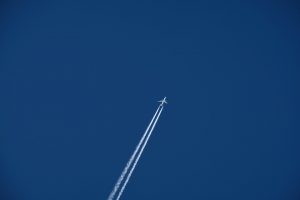 The National Aeronautics and Space Administration (NASA) is planning to conduct supersonic flight tests over Galveston, Texas. Known as the Commercial Supersonic Technology (CST) project, the space agency hopes to develop new flight technologies that could one day change the way in which we travel.
The National Aeronautics and Space Administration (NASA) is planning to conduct supersonic flight tests over Galveston, Texas. Known as the Commercial Supersonic Technology (CST) project, the space agency hopes to develop new flight technologies that could one day change the way in which we travel.
While several times faster than driving, flying via commercial airliner still takes a while. Flying from New York to London, for instance, takes a little over seven hours, assuming there are no stops between. Supersonic flights, on the other hand, could cut this time in half, allowing passengers to travel from New York to London is just three and a half hours.
As the name implies, supersonic jets are capable of flying at speeds faster than the speed of sound (March 1). Some people assume they are a new concept, but they’ve actually been around for decades, with the first supersonic jets originating during the 1960s and 70s. However, only two supersonic jets have ever entered the commercial airline industry: the Concorde and Tupolev Tu-144.
With the ability to fly twice as fast, supersonic jets could allow passengers to reach their destination more quickly. But there’s major hurdle preventing airlines from investing in supersonic jets, and it’s not a safety issue. When a jet breaks the speed of sound, it produces a loud noise known as a sonic boom. According to Wikipedia, this noise is the equivalent of an explosion or thunderclap. Not only is this a nuisance, but it can also damage nearby structures, shattering glass windows and shifting homes and small buildings from their foundation. Because of this, the U.S. Federal Aviation Administration (FAA) has banned supersonic flights over land.
NASA’s goal with the CST project is to develop new supersonic flight technology that will allow jets to fly faster than the speed of sound without producing the characteristic sonic boom. One idea is to break the speed of sound once the jet is about five to 20 miles off land. Once over sea, it can accelerate to Mach 1 speeds or faster, thus producing a less-intense sonic boom that’s away from residential communities and commercial businesses districts.
“Supersonic vehicle research addresses the development of tools, technologies, and knowledge that will help eliminate today’s technical barriers to practical commercial supersonic flight,” wrote NASA when describing its new CST project. If NASA’s CST project is a success, perhaps we’ll see the FAA lift its ban on supersonic flights, thus allowing commercial airlines to offer blazing-fast flights using supersonic jets.



